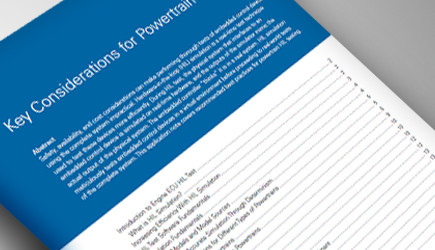Whitepaper: Key Considerations for Powertrain HIL Test
June 19, 2019
on
on

Safety, availability, and cost considerations can make performing thorough tests of embedded control devices using the complete system impractical. Hardware-in-the-loop (HIL) simulation is a real-time test technique used to test these devices more efficiently. During an HIL test, the physical system that interfaces to an embedded control device is simulated on real-time hardware, and the outputs of the simulator mimic the actual output of the physical system. The embedded controller “thinks” it is in a real system.
HIL simulation meticulously tests embedded control devices in a virtual environment before proceeding to real-world tests of the complete system. This application note covers recommended best practices for powertrain HIL testing. In this guide, learn about the tools and insight you need to build an effective HIL tester that will ensure you can achieve maximum test coverage and future proof your system against future technology requirements.
Topics covered:
Download now
Fill in the form below to be able to download National Instrument's free whitepaper Key Considerations for Powertrain HIL Test (PDF, 2 MB).
NOTE: After clicking the ‘Submit’ button the download link will appear on your screen immediately.
HIL simulation meticulously tests embedded control devices in a virtual environment before proceeding to real-world tests of the complete system. This application note covers recommended best practices for powertrain HIL testing. In this guide, learn about the tools and insight you need to build an effective HIL tester that will ensure you can achieve maximum test coverage and future proof your system against future technology requirements.
Topics covered:
- Introduction to Engine ECU HIL Test and How to Increase Efficiency with HIL Simulation
- HIL Test Software and Simulation Fundamentals
- Key Considerations of Different Powertrain Types
- Maximizing Test Coverage and the Importance of Flexibility in an HIL Tester
- Requirements Creation, Traceability, and Fulfillment
- Selecting the Right HIL System for Your ECU
Download now
Fill in the form below to be able to download National Instrument's free whitepaper Key Considerations for Powertrain HIL Test (PDF, 2 MB).
NOTE: After clicking the ‘Submit’ button the download link will appear on your screen immediately.
Read full article
Hide full article


Discussion (0 comments)